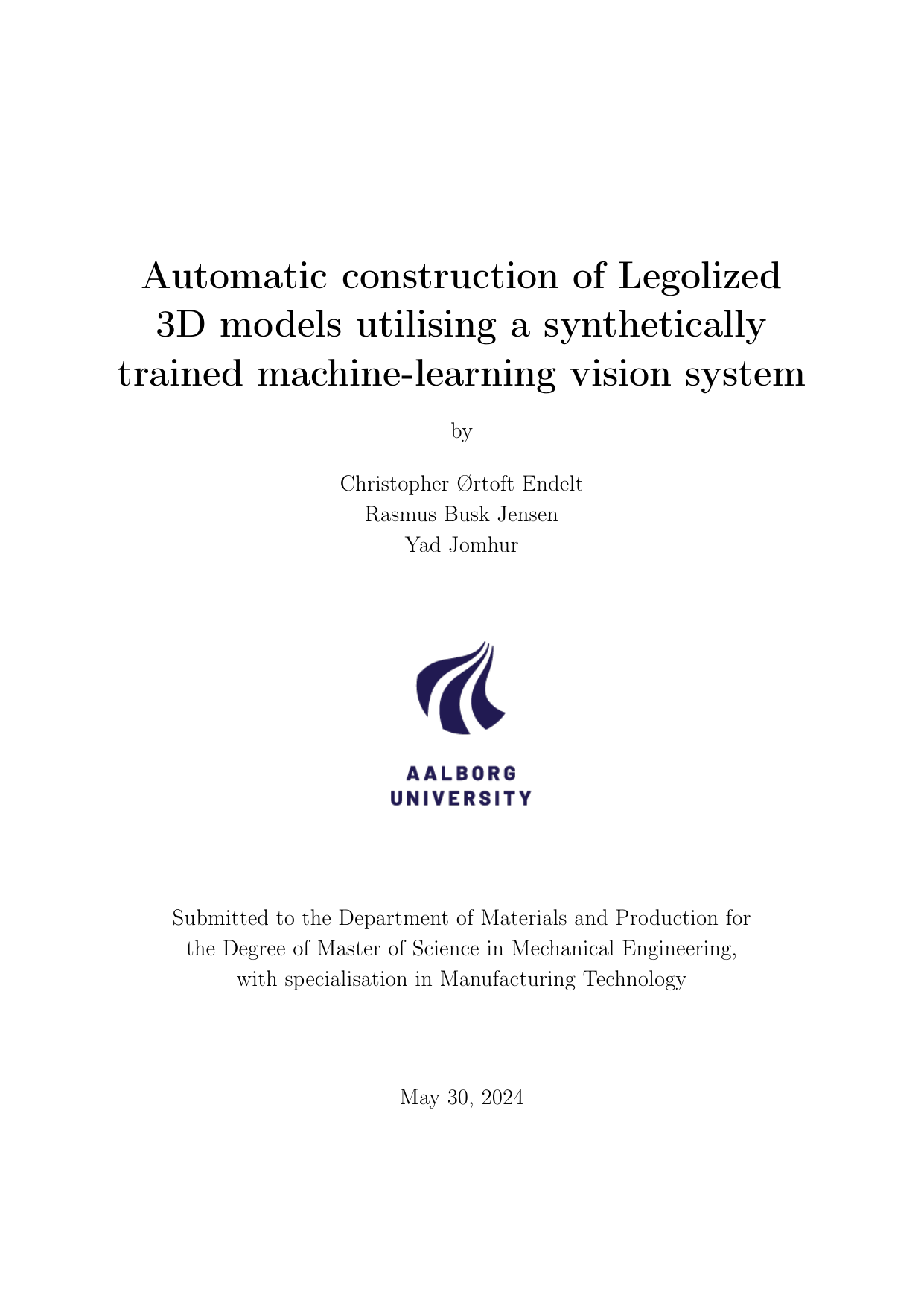
Automatic construction of Legolized 3D models utilising a synthetically trained machine-learning vision system
Term
4. term
Education
Publication year
2024
Submitted on
2024-05-30
Pages
79
Abstract
Within this thesis the development of a LEGO handling platform is described. This includes how 3d structures are legolized using voxilization, operations to reduce brick count while maintaining colour and shape, and how the structure is sliced and converted to instruction, with which a robot can build. A physical setup with one robot and a looped hopper system was constructed. The feed system made it possible to to move large quantities of random brick within a machine vision ROI. The machine vision utilised two machine learning models, a colour model for colour detection and a type model for type detection and segmentation. The models, which successfully detected LEGO bricks for pickup, were trained on 100% data. Furthermore, a pick-and-place process was made for the purpose of handling LEGO bricks. A force/torque sensor was implemented to enable automatic handling. From testing, KPI's were gathered and analysed. The results, along with the developments, were discuss and the thesis was concluded. A LEGO handling platform was developed. However, the sensor broke before the conclusion of the thesis, and therefore, the automation of the platform has not been verified.
Within this thesis the development of a LEGO handling platform is described. This includes how 3d structures are legolized using voxilization, operations to reduce brick count while maintaining colour and shape, and how the structure is sliced and converted to instruction, with which a robot can build. A physical setup with one robot and a looped hopper system was constructed. The feed system made it possible to to move large quantities of random brick within a machine vision ROI. The machine vision utilised two machine learning models, a colour model for colour detection and a type model for type detection and segmentation. The models, which successfully detected LEGO bricks for pickup, were trained on 100% data. Furthermore, a pick-and-place process was made for the purpose of handling LEGO bricks. A force/torque sensor was implemented to enable automatic handling. From testing, KPI's were gathered and analysed. The results, along with the developments, were discuss and the thesis was concluded. A LEGO handling platform was developed. However, the sensor broke before the conclusion of the thesis, and therefore, the automation of the platform has not been verified.
Keywords
Documents
